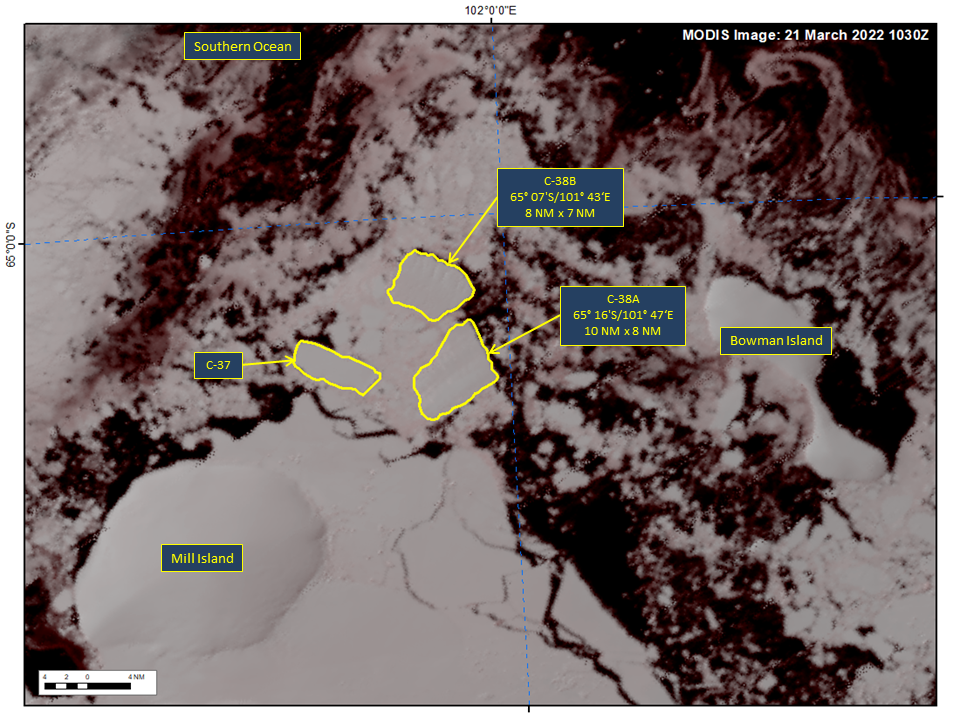Iceberg C-38 Has Calved into two new icebergs named C-38A and C-38B
By Christopher Readinger, USN
U.S. National Ice Center
March 21, 2022
Suitland, MD — The U.S. National Ice Center (USNIC) has confirmed that iceberg C-38 calved into two new icebergs: C-38A and C-38B (Reference Figure 1). As of March 21, C-38A was centered at 65° 16' South and 101° 47' East and measured 10 nautical miles on its longest axis and 8 nautical miles on its widest axis. C-38B was centered at 65° 07' South and 101° 43' East and measured 8 nautical miles on its longest axis and 7 nautical miles on its widest axis. In the five days since calving from the Conger Ice Shelf, these icebergs have drifted approximately 40 nautical miles to the west northwest.
The break in C-38 was first spotted by Jan Lieser from the Australian Bureau of Meteorology, and confirmed by USNIC Analyst, Christopher Readinger using the MODIS image in Figure 1.
Iceberg names are derived from the Antarctic quadrant in which they were originally sighted. The quadrants are divided counter-clockwise in the following manner:
A = 0-90W (Bellingshausen/Weddell Sea)
B = 90W-180 (Amundsen/Eastern Ross Sea)
C = 180-90E (Western Ross Sea/Wilkesland)
D = 90E-0 (Amery/Eastern Weddell Sea)
When first sighted, an iceberg’s point of origin is documented by USNIC. The letter of the quadrant, along with a sequential number, is assigned to the iceberg. For example, C-19 is sequentially the 19th iceberg tracked by USNIC in Antarctica between 180-90E (Quadrant C). Icebergs with letter suffixes have calved from already named icebergs, where the letters are added in sequential order. For example, C-19D is the 4th iceberg to calve off the original C-19 iceberg.
Iceberg positions are analyzed weekly and are available on the USNIC webpage at: https://usicecenter.gov/Products/AntarcIcebergs

For more information, please contact:
National Ice Center
Naval Ice Center
Command Duty Officer
Voice: (301) 943-6977
E-mail: nic.cdo@noaa.gov
Twitter: @usnatice
Facebook: @usnatice